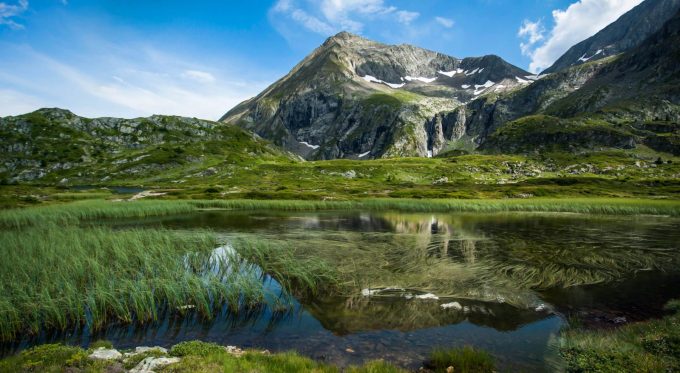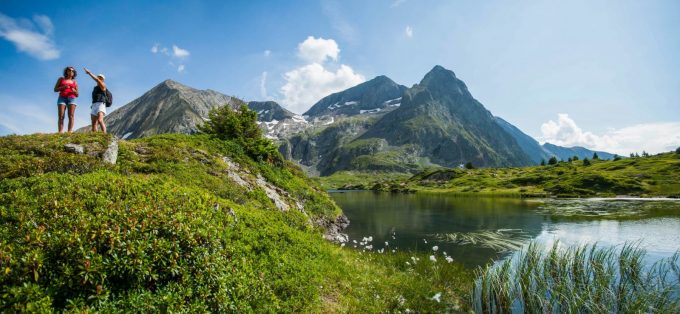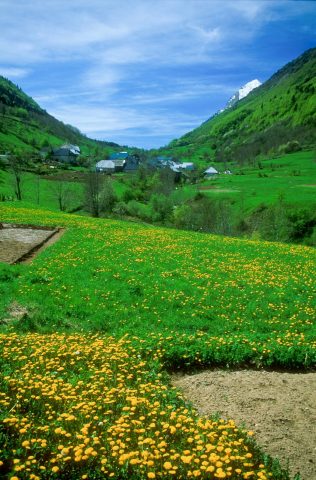The Massif du Taillefer has been awarded the Nature 2000 label for its moors, peat bogs and rocky environment. Remarkable for its biological diversity, the site houses 28 habitats of EU interest, including 5 priority conservation areas.
About : Natura 2000 : le Taillefer
An area that is perfect for exploration! Open your eyes, put your hands in your pockets and watch your step!
Outstanding natural heritage:
The Massif du Taillefer was formed 600 million years ago. When the glaciers receded 12,000 years ago, the glacier located on the Massif du Taillefer shaped the landscape we see today, dotted with small lakes. The extreme conditions of humidity, acidity and cold that reigned over these mountains prevented microorganisms from breaking down vegetation and organic matter, causing it to build up and form peat.
Many species adapted to this difficult environment. Sphagnum, otherwise known as peat moss, is like a huge sponge, absorbing up to 30 times its weight in water! Drosera, a small carnivorous plant with the sweet-sounding mediaeval name of "sun dew", eats insects to compensate for the lack of nitrate in the soil. The viviparous lizard has adapted to the cold - its blood contains molecules of antifreeze.
In the old days, these were lands of legends, but we now know a lot more about peatlands. They purify water and air, stock vast amounts of natural water, provide evidence of past climates (peat is an excellent preservative) and shelter endangered species.
The combination of climatic and natural factors, together with ancestral farming activity, has resulted in exceptional biodiversity in the Massif du Taillefer Natura 2000 site.
Remarkable for its biological diversity, the site houses 28 habitats of EU interest, including 5 priority conservation areas. 645 plant species have been recorded, together with no fewer than 191 animal species.
Human activity:
Alpine farming occupies around 50% of the surface of the site, consisting of 4 areas of pastureland. Agri-environmental measures are proposed to farmers wishing to commit to biodiversity. Extensive farming practices are encouraged, including adapting grazing to plant cycles, managing wet zones and not disturbing black grouse during the breeding season.
Many tourists (on foot, horseback, mountain bikes and skis) visit this site for its beauty and easy access. Natura 2000 strives to raise awareness and educate the public on environmental issues - "better knowledge for better protection".
What can I do?
When hiking, to ensure future generations can marvel at the wonderful scenery and biodiversity:
- Stay on the way-marked trails (paint marks, signs). Don't take any shortcuts, which erode the soil, destroy plant life and may disturb both wildlife and farm animals.
- Keep your dog on a lead to ensure it doesn't disturb either wildlife or farm animals.
- Never light fires in the mountains, as this can destroy the soil for decades to come.
- Bivouacing and horseriding are regulated in the Gavet-Clavaux section.
What is Natura 2000?
Nature and the preservation of nature knows no boundaries. In an effort to maintain the natural diversity of the European continent, whilst allowing social, economic and cultural activities, the EU has created the world's largest ecological network, known as Natura 2000. There are 27,000 sites in Europe, including 1,753 sites in France, covering 12.5% of national territory.
Natura 2000 is a participative, voluntary programme. Its aim is to preserve natural environments of interest in Europe, guaranteeing quality of life for future generations.
Services
Tours
- Unguided individual tours available permanently
Download
Opening
From 01/06 to 31/10.
This service provider also offers
Location supplement
The site can be reached from Alpe du Grand Serre or Ornon (la Grenonière).




